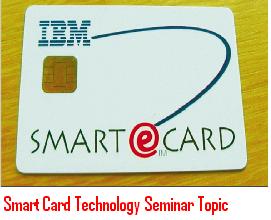 Smart card technology seminar topic covers introduction of smart card technology, design of smart card, smart card application and usage, smart card examples, smart card applications and interfaces of smart card. Smart card is a ATM card sized plastic card with microchip integrated inside that card.
Smart card technology seminar topic covers introduction of smart card technology, design of smart card, smart card application and usage, smart card examples, smart card applications and interfaces of smart card. Smart card is a ATM card sized plastic card with microchip integrated inside that card.
There are two types of cards available in the market one which stores information is called memory chip and card which can take input and make decisions with some memory is called a microprocessor chip. Because of decision making capability it is called active and smart card. This card has memory size of 32,000 bytes, in present market smart cards are built with math co-processors which can take perform encryption routing in less time and comes with memory space for storage.
This paper explains step by step procedure on how smart cards are manufactured. Smart cards are mostly used in banks for ATM cards, Credit cards, Visa cards and some of the other applications are pay phones, Mobile communication, banking and retail, electronic purse, health care and ID verification and access control.
download Smart Card Technology Seminar Topic , paper presentation.
